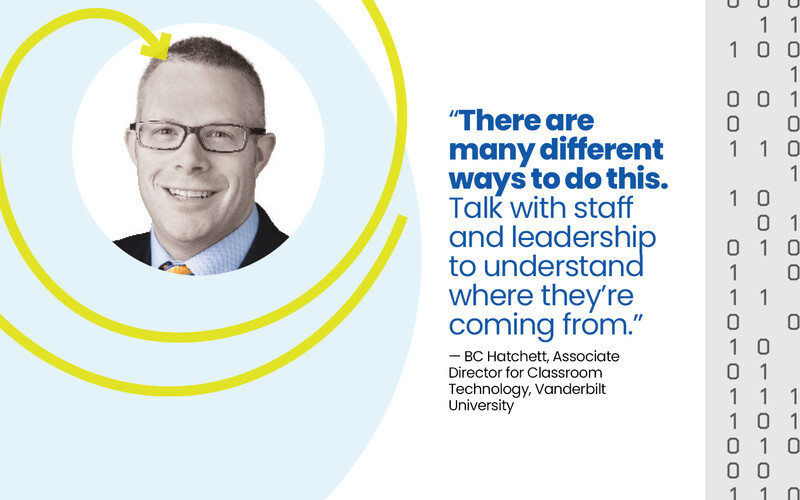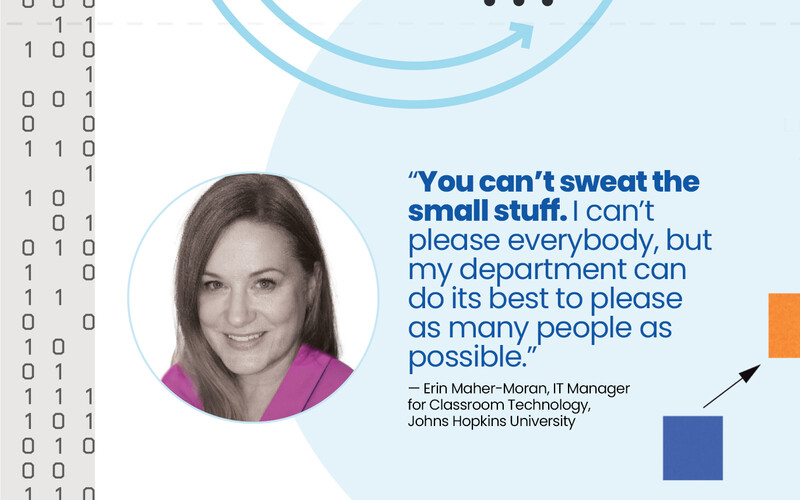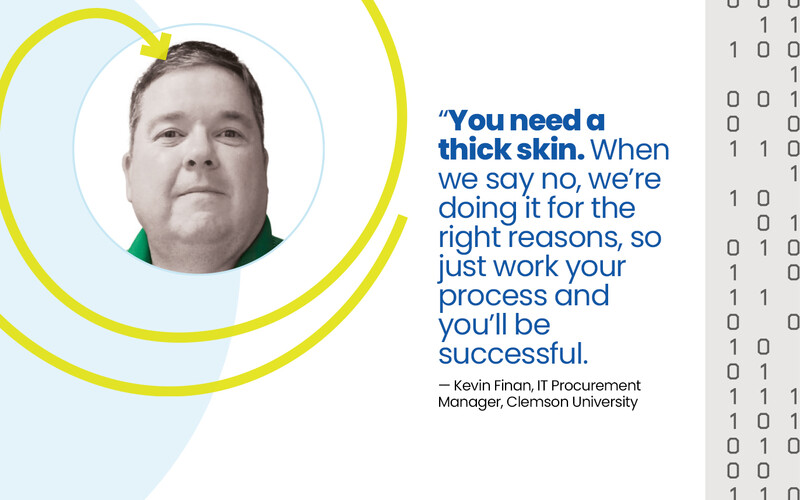EDTECH: Which cost-saving strategies have you found to be effective?
FINAN: I negotiate everything that comes across my desk, including intangibles. If my goal is a 10% reduction in cost, and my vendor can only give 7%, what else could we get? Often, vendors have an annual conference and can provide free admission for a couple of Clemson staffers over the life of the contract. Most suppliers will give that in a heartbeat because it’s not a hard cost to them. But for me, that’s a couple thousand dollars’ worth of training every year where my team can learn new things we can do with the tools we already have.
HATCHETT: A constant technology platform review is one of our key drivers. We’ve tried to become more nimble since the chip and supply chain shortages during the pandemic. We took that as an opportunity to re-evaluate our platforms and adopt software-based solutions and standards-based protocols that allowed us to branch out into different manufacturers. We’ve reduced classroom costs by $12,000 to $15,000 per room, just by looking at our platforms and negotiating with suppliers. Our procurement departments are excellent at leveraging contracts and relationships, so we’ve achieved savings by having our suppliers sharpen their pencils and be a little more competitive with each other.
WARAICH: Every year, we review software to identify anything we haven’t been using and look for overlap between tools. For example, we used a phishing simulation tool for a few years. When it came time to renew, we looked at a similar tool from Microsoft that we already have as part of our licensing. Microsoft’s tool has become much more mature since we last reviewed it, so now we’re using that instead. Sometimes the savings are small, but it’s the mindset that matters. We take time to ask, “Where can I save, so that I can use that money somewhere else, strategically?”
RELATED: These are the top three signs it’s time for eProcurement integration.
EDTECH: How do you determine which IT initiatives to prioritize?
WARAICH: It all starts with your strategic goals. If you haven’t defined those, you’re always in a reactionary mode, so the new, shiny object comes in and you start running after it. Having strategic goals for IT gives me clear criteria for where we need to invest.
MAHER-MORAN: We’re still prioritizing the ability to record lectures and support remote learning in all of our classrooms. We want to make sure that we can, at minimum, fulfill the needs and maintain a similar user experience from room to room. We try to find a happy medium, where we provide what’s needed, make it easy for our team to maintain and ensure uptime for our faculty and instructors.
HATCHETT: For our annual upgrade cycle, we follow policies and procedures that give us decision-making guideposts, especially when it comes to centralized funding versus departmental funding. Then, we do a deep dive on metrics. What is our use rate? What are our areas of greatest impact? What areas are no longer meeting faculty’s pedagogical needs? That helps us determine our highest priorities, and then we can determine what resources we can commit to lower- or medium-priority spaces.

















